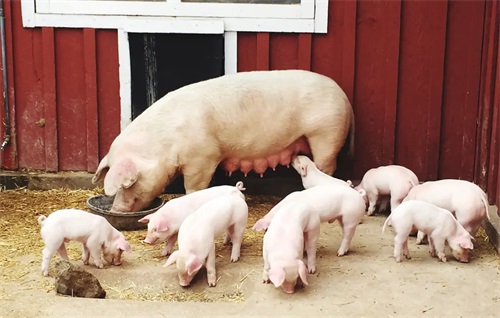When breeding reserve sows, the backfat meter detects that the backfat thickness of the sow is 15-23mm, the age is 184-320 days, and the weight is 118-148kg. These three values are positively correlated with the average litter size and live litter size, that is, the higher the backfat thickness, breeding age, weight, and litter size of binary reserve sows. But as the breeding age, weight, and P2 backfat thickness of reserve sows increase, it directly leads to an increase in feeding costs for primiparous sows and a rise in the cost per newborn piglet. Meanwhile, as the mating age of the reserve sow increases, it may lead to a decrease in the total parity and total litter size from birth to 3.5 years (approximately 6 births).
Backfat analyzer

According to the backfat analyzer, it was found that the highest total litter size of 64.6 piglets was achieved when the reserve sows were mated at P2 backfat thickness of 20mm and weight of 145 women for 5 consecutive pregnancies; When mating with a P2 backfat thickness of 14.6mm and a female weight of 115, the lowest number of offspring born for five consecutive pregnancies was 55.6. Therefore, the appropriate mating weight and backfat thickness have a significant impact on the lifelong reproductive ability of sows.
Generally, modern large high lean meat breed reserve sows can be bred at 220-240 days of age, with a weight of 130-140kg and a P2 backfat thickness of 18-20mm in the second or third estrus period. The backfat analyzer suggests that young sows should be mated during the 2nd and 3rd estrus periods, with an age of 220-230 days and a weight of 130. 140kg, P 'backfat thickness is 16.20mm. Whittemore (1998) emphasized that the age of the first sow is 220 days old, with a weight of 130kg and a backfat thickness exceeding 18mm.
The backfat analyzer suggests that the ideal breeding age for reserve sows should be 251-320 days old, with a P 'backfat thickness of 19.34-19.84mm and a weight of 138-148kg. According to Table 3, the ideal backfat thickness for breeding P2 for reserve sows should be 18.23mm, with an age of 248-274 days and a weight of 132-147kg. The reasonable mating age for reserve sows should be 245 days. 275 days old, P2 backfat thickness of 18-23mm, weight of 130-145kg. This result is consistent with the research results of Wang Longqin et al., C10se, and Whit temore on backfat thickness and body weight, but the age is significantly higher than the research results of Wang Longqin et al. The author believes that this is because the weight of the reserve sows in this farm did not meet the standard before introduction. When this batch of reserve sows was introduced, the maximum pig was 165 days old and the maximum individual weight was 95kg. The backfat analyzer should detect that the weight of reserve sows should reach 100kg at 150 days of age, but many pig farms in our country find it difficult to achieve this target. After introduction, due to vaccination and other reasons, the growth rate of reserve sows was once again affected, resulting in an overall growth rate lower than that of reserve sows in the pig farm studied by Wang Longqin et al., which affected the backfat thickness and weight of this batch of reserve sows at 220-240 El age.
The backfat analyzer suggests that pig farms should determine the mating age of reserve sows based on their own production level. For pig farms with high production levels, reserve sows can be aged between 220-240 days, weigh over 130kg, and have a backfat thickness of over 18mm, preferably up to 20. Mating at 22mm. For pig farms where the weight of reserve sows cannot reach 130kg at 220 days of age, the mating age needs to be extended to 245.275 days of age, until the weight reaches 130.145kg and the 1'2 backfat thickness reaches 18. Mating at 23mm yields more ideal results.









